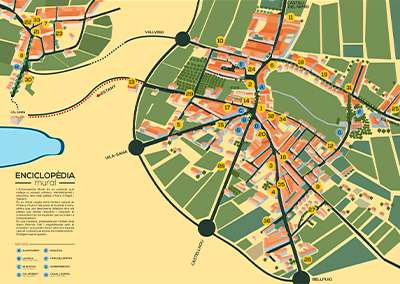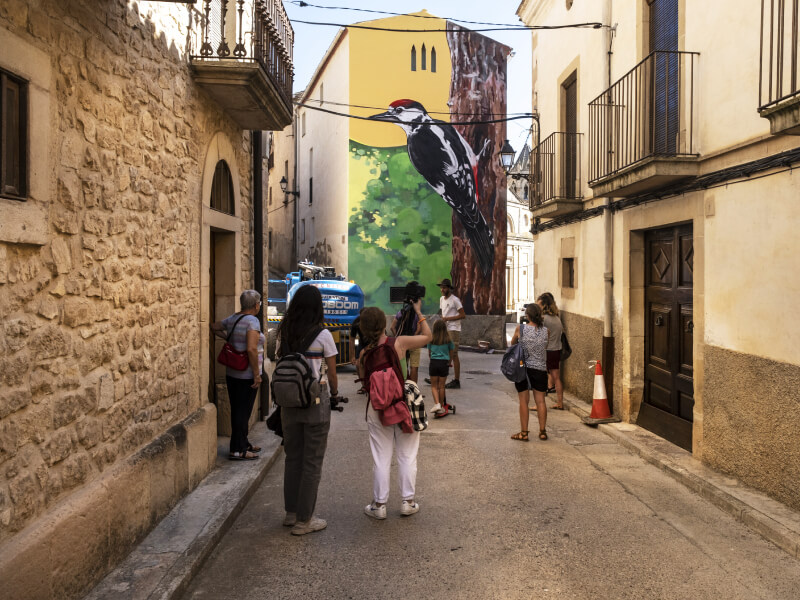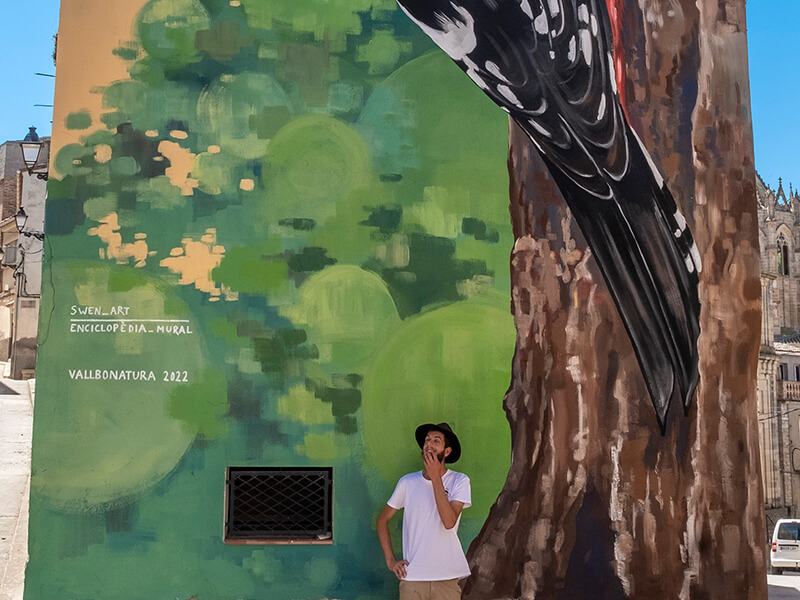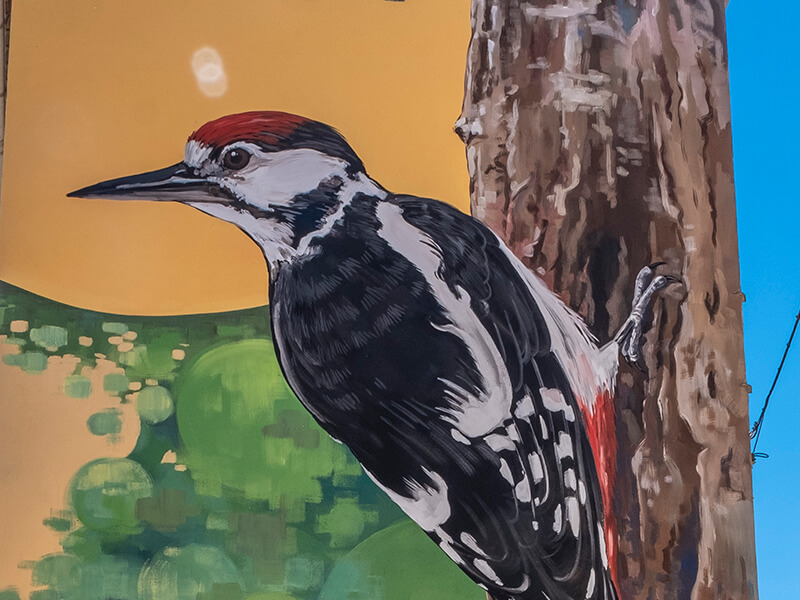23-26 cm
Great Spotted Woodpecker
Dendrocops major

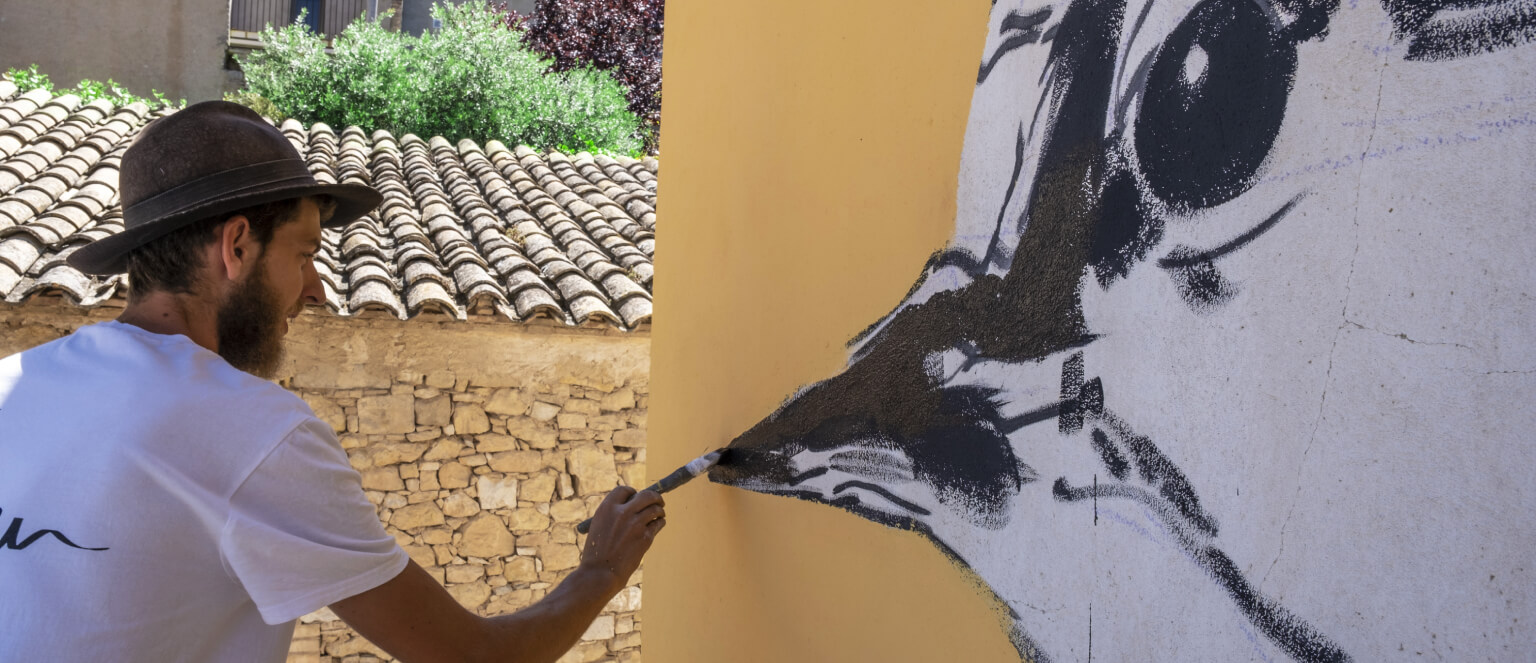



38-44 cm

minor concern

riparian forest Pond

Insects, larvae,
nuts (winter)

common
This woodpecker is called a heron because the black and white colours of its body are reminiscent of the heron, a very abundant and well-known bird in our region.
The anatomy of this species is totally adapted to its curious habits: it has a fairly long tongue which it uses to search for insects in the bark of trees.
When it picks it up, it wraps it like a fireman’s sleeve around its skull and uses it as a shock absorber, essential to protect the brain when it bites hard into trees.
The tail has two particularly stiff central feathers, which it uses as an ice axe. This helps it to climb up trunks better and also acts as a spring, which increases its destructive power when drilling holes in wood.

